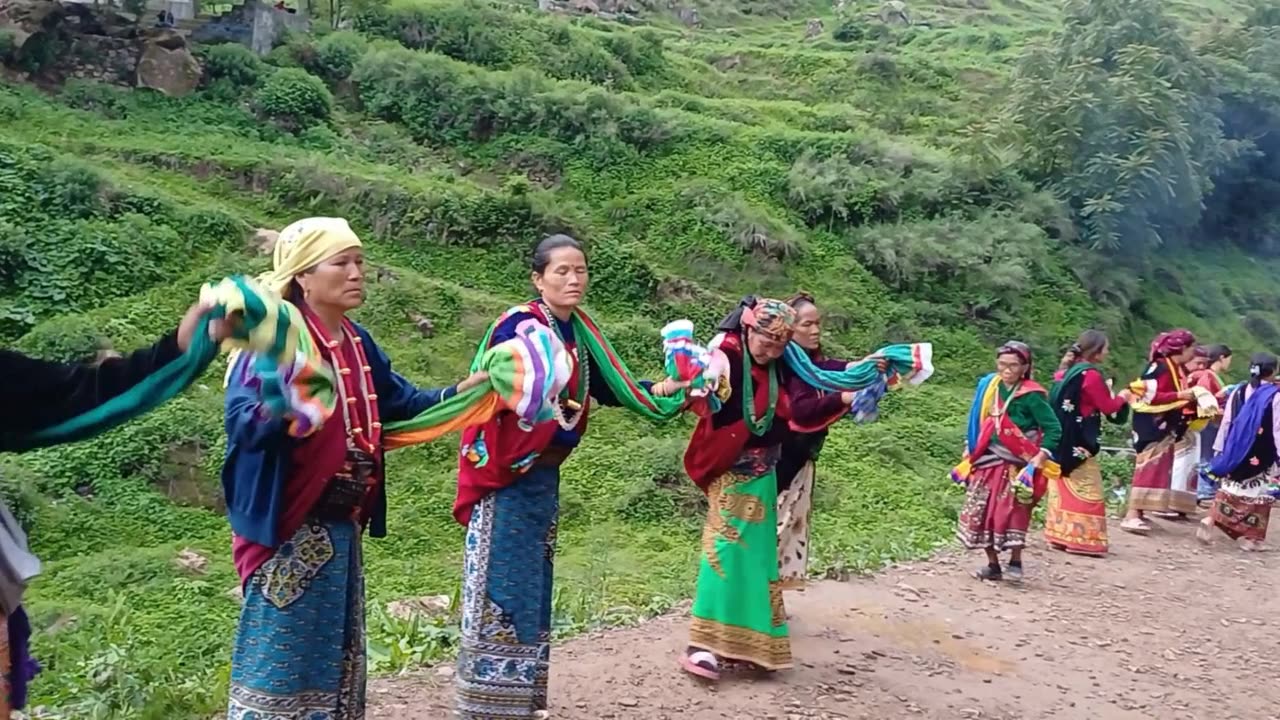Premium Only Content

Bhume Dance
The Bhume Dance is a traditional and sacred cultural dance performed mainly by the Magar community of Rukum East and other hilly regions of Nepal. Deeply connected to the Bhume Puja, a festival dedicated to Mother Earth (Bhumi Devi), it is celebrated during the planting season to express gratitude for fertility, good harvests, and natural blessings. Dancers, dressed in colorful traditional attire, move in circles to the beats of the madal, jhyali, and bhusya, symbolizing harmony, unity, and the strong bond between humans and nature. The festival and dance together highlight the community’s respect for the land that sustains their livelihood.
The significance of the Bhume Dance lies in its spiritual and cultural depth. It represents prayers for rainfall, agricultural prosperity, and the overall well-being of the community. Performed with devotion and joy, it brings villagers together — young and old alike — to celebrate the generosity of nature and the blessings of the earth. The circular dance formations represent the continuous cycle of life and seasons, reflecting the community’s understanding of balance and renewal in nature.
The importance of the Bhume Dance goes beyond celebration. It acts as a living tradition that preserves the Magar community’s identity and connects generations through shared values and heritage. The dance teaches respect for nature and promotes harmony within society. In Rukum East, the Bhume Dance remains a proud symbol of cultural identity, unity, and environmental awareness — a timeless reminder that human life is deeply intertwined with the health and generosity of Mother Earth.
-
 LIVE
LIVE
StoneMountain64
1 hour agoArc Raiders is FINALLY Out for Everyone #ad !ark !arktips
54 watching -
 LIVE
LIVE
Daniel Davis Deep Dive
4 hours agoJohn Mearsheimer: New Nuclear Arms Race, Pentagon to Resume Testing
52 watching -
 LIVE
LIVE
TheAlecLaceShow
1 hour agoTrump Meets With Xi Jinping | Guest: Jared Hudson | The Alec Lace Show
36 watching -
 LIVE
LIVE
The Charlie Kirk Show
1 hour agoOle Miss Aftermath = Arctic Frost + Charlie's Speech Mission | Halperin, Rogers | 10.30.2025
4,178 watching -
 55:57
55:57
The Rubin Report
2 hours agoWatch Adam Carolla Destroy Democrat’s Narrative w/ Facts in Only 1 Minute
18.5K21 -
 LIVE
LIVE
LFA TV
16 hours agoLIVE & BREAKING NEWS! | THURSDAY 10/30/25
2,884 watching -
 LIVE
LIVE
SOLTEKGG
2 hours ago🔴LIVE - 30 + Kill Battle Royale - BF6 Giveaway
64 watching -
 LIVE
LIVE
GloryJean
3 hours agoEvolving into a BEAST in BF6 RedSec
20 watching -
 LIVE
LIVE
SilverFox
13 hours ago🔴LIVE - ARC RAIDERS LAUNCH DAY!!
58 watching -
 1:01:50
1:01:50
VINCE
4 hours agoThe Rabbit Hole Goes MUCH Deeper Than Anyone Thought | Episode 158 - 10/30/25
177K145